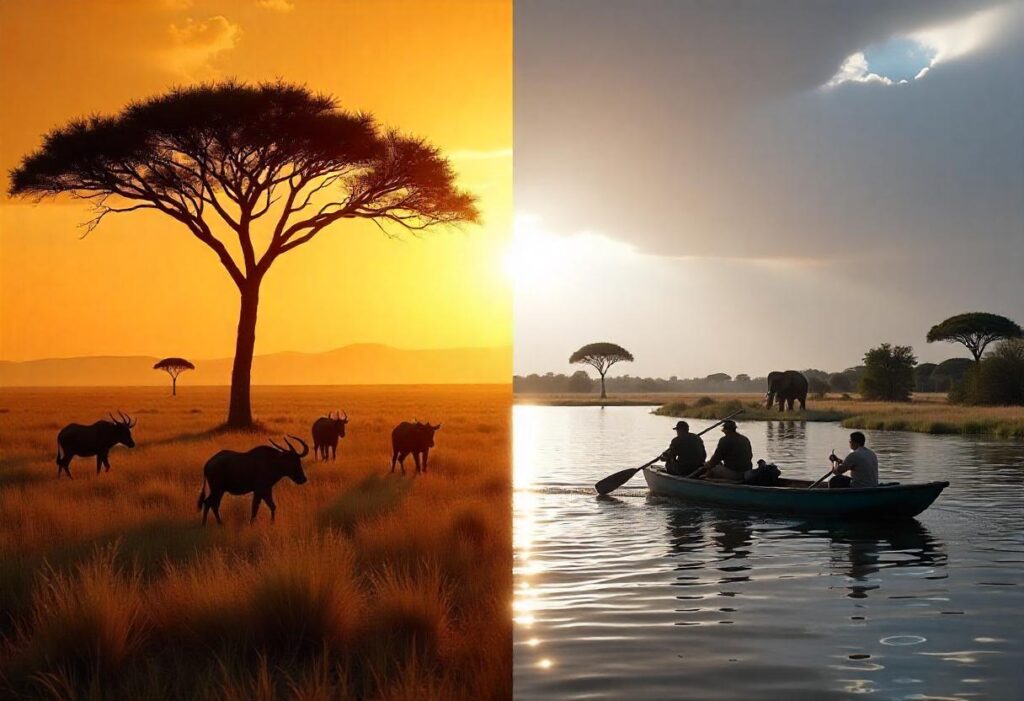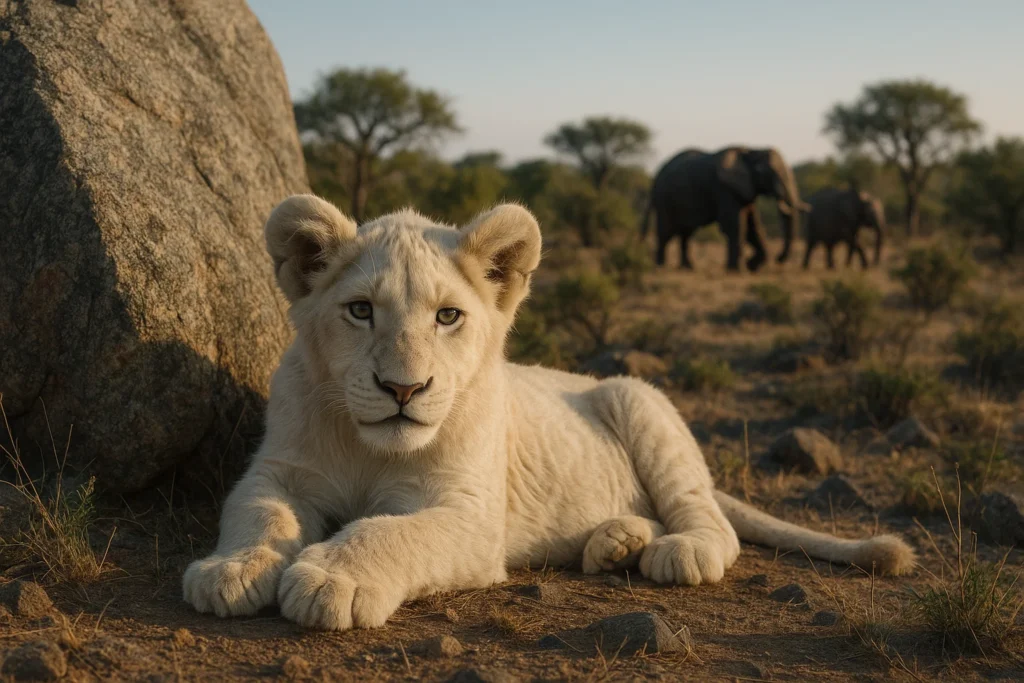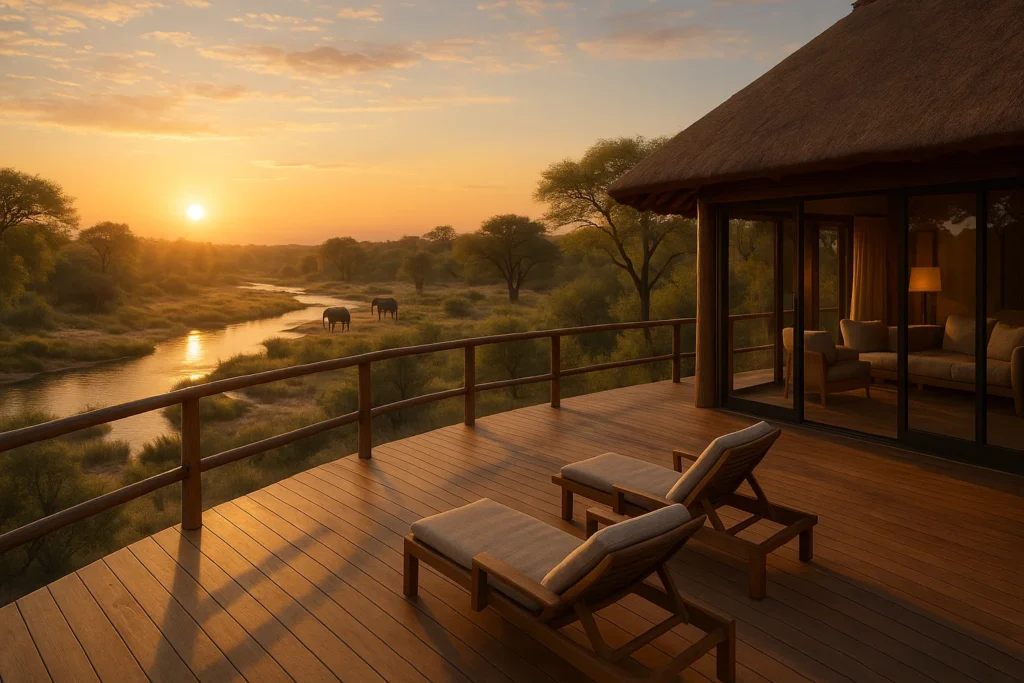When planning a safari, one of the biggest decisions is choosing between East and Southern Africa. While both regions offer unforgettable wildlife experiences, their landscapes, seasons, and styles of safari vary significantly. This guide breaks down the key differences to help you decide which region best suits your travel goals, timing, and interests.
Wildlife highlights: Big Five, Great Migration, and rare encounters
East Africa: drama on the open plains
East Africa, especially Kenya and Tanzania, is famous for its vast savannahs and the Great Migration—an awe-inspiring movement of millions of wildebeest and zebras across the Serengeti and Masai Mara. It’s also a prime region for spotting the Big Five and experiencing predator-prey action on a massive scale.
Southern Africa: biodiversity and unique species
Southern Africa—think Botswana, South Africa, Namibia, and Zimbabwe—offers exceptional Big Five safaris with the bonus of rare species like wild dogs, sable antelope, and black-maned lions. The denser bush environments often mean sightings are more intimate and less crowded.
Safari styles and activities: from luxury lodges to walking safaris
East Africa: classic safaris with sweeping views
Safaris here are typically vehicle-based and take place in expansive, open landscapes. Expect iconic tented camps, photogenic scenery, and the chance to combine bush and beach (think Zanzibar). Balloon safaris are a signature experience in this region.
Southern Africa: more variety, more privacy
Southern Africa is known for private reserves, fewer vehicles per sighting, and a wide array of activities—walking safaris, boat cruises (especially in Botswana’s Okavango Delta), and even rhino tracking on foot. The infrastructure here supports both ultra-luxury and self-drive options.
Climate and best times to visit
East Africa
- Dry seasons: June to October, and December to February
- Great Migration peaks: July–September (Masai Mara), January–March (calving in Serengeti)
- Temperatures are moderate year-round due to higher altitudes.
Southern Africa
- Dry season: May to October (best for wildlife)
- Green season: November to April (lush landscapes, fewer crowds)
- Some parks (like Kruger) are accessible year-round.
Accessibility and travel logistics
East Africa
- Main hubs: Nairobi (Kenya) and Arusha/Kilimanjaro (Tanzania)
- Often includes small bush flights between parks
- Ideal for combining multiple iconic parks (e.g. Serengeti + Ngorongoro Crater)
Southern Africa
- Main hubs: Johannesburg and Cape Town (South Africa), Maun (Botswana), and Windhoek (Namibia)
- Better infrastructure for self-drives
- Safari and city/beach combos are easier (e.g. Kruger + Cape Town)
Scenery and terrain
East Africa
- Wide, open plains
- Iconic acacia-dotted landscapes
- Volcanoes and craters (e.g. Ngorongoro, Mount Kilimanjaro backdrop)
Southern Africa
- Varied terrain: deserts, wetlands, bushveld, and forest
- Okavango Delta’s seasonal floods create a unique safari ecosystem
- Spectacular riverscapes in Chobe, Zambezi, and Lower Zambezi
Ideal for…
| Travel Type | East Africa | Southern Africa |
|---|---|---|
| First-time safari | ✔️ Great Migration, iconic parks | ✔️ Excellent guides, more variety |
| Families | ✔️ Cultural experiences, beach combos | ✔️ Malaria-free areas (e.g. Madikwe) |
| Luxury travelers | ✔️ Tented camps with scenic views | ✔️ Ultra-exclusive lodges, private reserves |
| Photographers | ✔️ Open terrain, dramatic light | ✔️ Fewer vehicles per sighting, rare species |
| Adventure seekers | ✔️ Balloon safaris | ✔️ Walking, boating, and off-the-grid options |
So, which safari region is right for you?
Choosing between East vs. Southern Africa safaris depends on what kind of experience you’re looking for. If you want vast open landscapes and iconic wildlife spectacles like the Great Migration, East Africa might be the perfect fit. If you’re after varied activities, private luxury, and more intimate sightings, Southern Africa could be your ideal match.
FAQs about Safari destinations
Both are excellent, but East Africa offers iconic visuals and well-known wildlife concentrations. Southern Africa provides more flexibility in activities and style.
Yes, but it requires more planning and budget. Regional flights and longer distances make it better suited for extended trips.
Southern Africa, particularly South Africa and Namibia, is ideal for self-drive safaris with well-maintained roads and infrastructure.
Southern Africa offers more mid-range and budget-friendly options, especially in South Africa. East Africa tends to be more expensive due to park fees and fly-in logistics.






